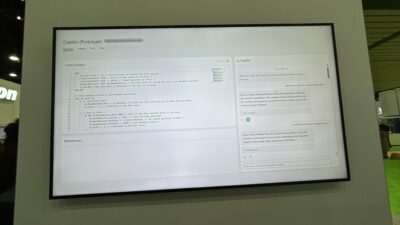Picking and placing parts has been common in pneumatics for many years. Devices typically apply one of two principles to do the picking: Venturi or Bernoulli. A vacuum generator based on the Venturi principle creates a low pressure in a suction cup. The difference between the low pressure created by the Venturi and atmospheric pressure presses the part into the suction cup.
Picking and placing parts has been common in pneumatics for many years. Devices typically apply one of two principles to do the picking: Venturi or Bernoulli.
A vacuum generator based on the Venturi principle creates a low pressure in a suction cup. The difference between the low pressure created by the Venturi and atmospheric pressure presses the part into the suction cup.
Venturi vacuum generators have no moving parts. Air is forced through a tapered orifice to increase air speed. This lowers pressure, since the air flowing into the taper has to be the same as that flowing out.
Despite wide use of the Venturi principle in pick-and-place, there are five common problems created by its application.
Making a seal on the cup. To use a suction cup successfully, you create a seal between the cup and the part. Failure to do so allows air to leak into the cup, reducing the vacuum level, which often results in the part not being picked up.
Evacuation time. The Venturi creates a low pressure, but the low pressure still needs to propagate from the Venturi to the suction cup. Depending on the Venturi and the volume to be evacuated, this can take some time before the cup can lift the part. You can sense the pressure level at the cup with a pressure switch to be sure there’s enough lift at the cup. This adds component costs, installation time, and possibly a programmer’s time to guarantee that the vacuum level is sufficient.
Putting the part down. The flip side of generating a vacuum to lift a part is that it takes time for the vacuum to decay and allow part placement. If you simply turn off the air supply to the Venturi, air slowly bleeds into the suction cup until the vacuum no longer keeps the part stuck to the cup.
Needing a smooth surface. All vacuum applications using suction cups have one thing in common: The part has to be smooth, so a suction cup can seal on it to maintain the vacuum. Any leaks at the cup reduce the lifting force the cup generates.
Vacuums cups can deform the part. Suction cups are concave. If a large-diameter cup picks up a part, then the air pressure underneath the part tries to push the part into the cup. For heavy, rigid parts, this isn’t a problem, but brittle parts can be broken and soft parts deformed by picking them up with a suction cup.
Solution: no contact
Non-contact transfer (NCT) devices address the problems encountered with suction cups. The NCT operates by blowing air from its center outward over its face. The curved path across the surface causes the airflow to change speed, generating a low-pressure area, similar to the Venturi. This is known as Bernoulli’s principle. This low-pressure area then co-exists with the positive air pressure flowing from the NCT.
The lifting force and positive airflow work together to position the part in the “sweet spot”—where the lifting force and exhaust balance.
The NCT provides the same functionality as a Venturi/suction cup combination, but there is no delay between starting the air supply and generating the lifting force. Similarly, because the lifting force is caused by air flowing over the NCT surface, the lifting force ceases as soon as the airflow stops. Because of this, there is no need for vacuum switches and blow-off valves, reducing component count and installation costs.
NCT applications include handling printed circuit boards with through holes, irregular, rough-sided foods, such as bread or cookies, cream cheese, dusty parts, porous items, opening bags, and hot or cold items.
Author Information
Phil O’Neill is standard products manager, Bosch Rexroth Pneumatics, Lexington, KY.



